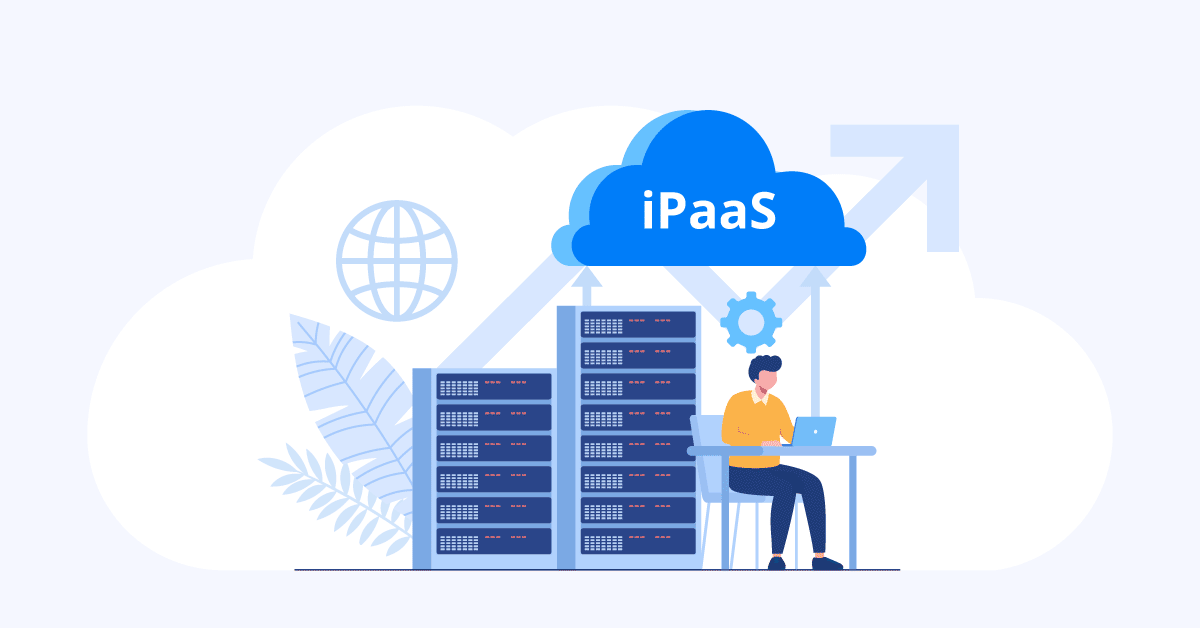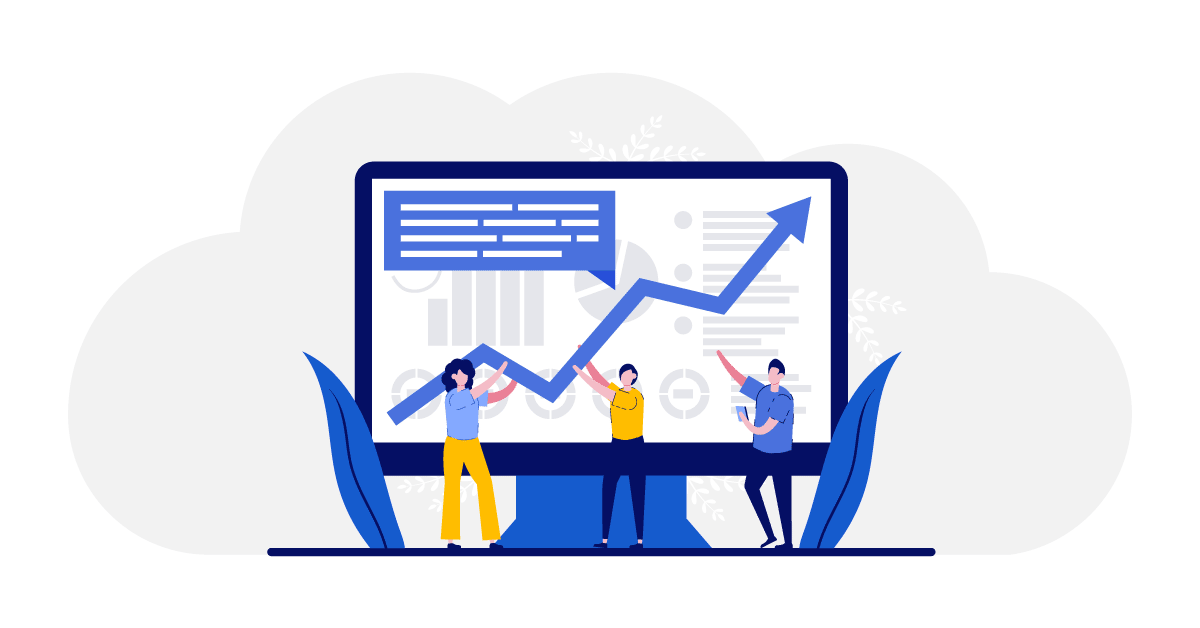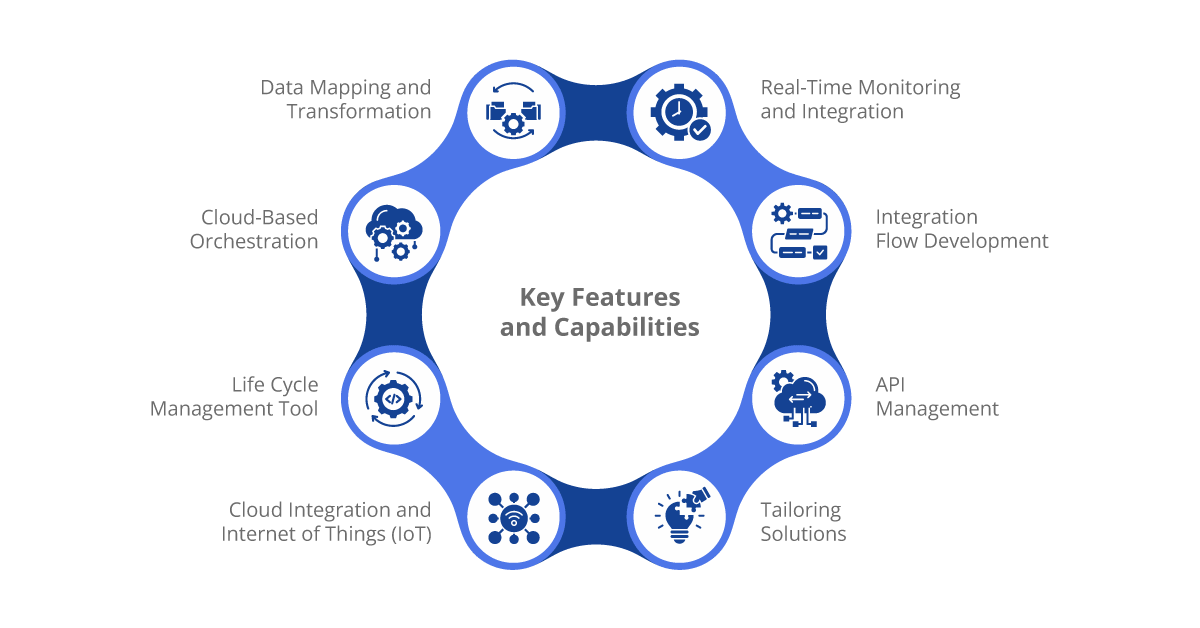Navigating the dynamic currents of the digital age, Integration Platform as a Service (iPaaS) has risen as a fundamental catalyst, forging connections and fostering collaboration across a tapestry of applications and data sources.
As the clock ticks towards the years 2024-2030, the iPaaS landscape stands on the precipice of unparalleled expansion, fueled by the surging demand among businesses to refine their operations, amplify agility, and catapult themselves into the vanguard of innovation.
Aonflow iPaaS – Free for First 3 Months!
Build and run up to 1,500 transactions monthly with no cost. No payment info needed!
The Evolving Digital Landscape: Catalysts for iPaaS Growth
In the wake of the digital revolution, we find ourselves immersed in an unprecedented era where the heartbeat of business, data, and applications, pulsates through an intricate network of diverse platforms and environments. This evolution, characterized by the prolific generation and dissemination of digital assets, has given rise to a landscape of immense opportunities but, concurrently, substantial challenges.
iPaaS is the linchpin that has materialized as the bridge spanning the gaps in this multifaceted digital expanse. Its role extends beyond mere connectivity; iPaaS emerges as the cornerstone upon which organizations construct a unified and cohesive ecosystem. It acts as the digital alchemist, synthesizing the disparate elements of data and applications into a harmonious symphony of operational efficiency and strategic alignment.
Within this dynamic context, exploring the key trends becomes imperative to understanding the driving forces behind the escalating demand for robust integration solutions. The digital landscape is no longer static; it is a living organism, constantly evolving and adapting to new technologies, consumer behaviors, and market dynamics. iPaaS, as a response to this evolutionary imperative, becomes not just a solution but a strategic imperative for businesses aiming to navigate the complex currents of the digital age.
The trends shaping this landscape are as diverse as the digital ecosystem itself. Cloud computing, IoT proliferation, big data analytics, and the rise of mobile technologies are but a few of the forces propelling the metamorphosis. iPaaS, in its adaptability and versatility, aligns seamlessly with these trends, offering organizations a scalable and agile framework to integrate and leverage the opportunities presented by each of these transformative elements.
As we delve deeper into these trends, we unravel the intricate dance between technology and business objectives. The demand for real-time data access and analytics, driven by the thirst for actionable insights, propels iPaaS into the spotlight as the conduit that facilitates the flow of information across systems. The growing reliance on SaaS applications, often siloed and disparate, necessitates a unifying force, and iPaaS steps in as the unifying agent, breaking down the walls between these digital enclaves.
Furthermore, the surge in e-commerce and the digital customer experience mandates a seamless flow of information between front-end applications and back-end systems, a realm where iPaaS plays a pivotal role in ensuring coherence. Security concerns, another formidable aspect of the evolving landscape, are met head-on by iPaaS through robust encryption, compliance adherence, and secure data transfer protocols.
In essence, iPaaS doesn’t merely respond to the shifts in the digital landscape; it anticipates and orchestrates them, becoming the enabler of strategic alignment in an environment marked by perpetual change. As organizations navigate the intricate tapestry of the digital age, iPaaS emerges not just as a solution but as a strategic imperative, a vital instrument in orchestrating the symphony of data and applications in harmony with the rhythms of the ever-evolving digital landscape.
iPaaS Market Trends and Forecast: A Glimpse into the Future
As the digital landscape undergoes a metamorphic evolution, Integration Platform as a Service (iPaaS) emerges as a transformative force, steering the course of seamless connectivity and data orchestration across diverse platforms. Casting our gaze into the horizon of 2024-2030, the iPaaS market stands on the brink of unprecedented growth, propelled by the escalating demand from businesses eager to optimize operations, fortify agility, and propel themselves into a realm of unparalleled innovation. This section embarks on a comprehensive exploration, dissecting the current iPaaS market trends, and leveraging industry insights to unveil the intricate tapestry of iPaaS growth from 2024 to 2030.
The iPaaS Market Landscape: A Kaleidoscope of Growth
The Global Integrated Platform as a Service (IPaaS) Market, valued at USD 4.88 billion in the base year 2022, is poised for a meteoric rise, reaching an estimated USD 48.80 billion by 2030. This staggering growth, reflected in a Compound Annual Growth Rate (CAGR) of 33.35%, underscores the exponential demand for integration solutions across diverse industries and sectors.
Forecast Period: 2022–2030
Market Size (Base Year): USD 4.88 Billion
Market Size (Forecast Year): USD 48.80 Billion
CAGR: 33.35%
iPaaS Market Definition:
iPaaS is a cloud-based platform fostering the seamless integration, automation, and management of applications, business systems, and data dispersed across diverse environments. iPaaS acts as the digital maestro, offering pre-built connectors, business rules, and transformations to expedite application development and streamline integration flows.
Drivers:
Infrastructure Adoption for Hybrid and Multiple Clouds: The rise of hybrid clouds, offering customizable and flexible solutions, resonates with organizations seeking the best fit for their specific business requirements. iPaaS providers, offering tailored development kits, aid in updating outdated apps and incorporating features like mobile device support, social platform integration, and business data management.
Real-Time Cloud Monitoring’s Significance: The growing importance of real-time cloud monitoring across industries intensifies the need for iPaaS. iPaaS emerges as a solution for businesses aiming to enhance network security, track network activity, and promptly identify and address issues.
Opportunities:
Simplifying Business Processes: Despite challenges, enterprises prefer iPaaS as a standalone cloud-based and on-premises service platform for its control over integration flows, cost efficiency, faster delivery, and reliability. The integration of SaaS and iPaaS platforms streamlines business processes, fostering iPaaS market growth.
Development in iPaaS: The burgeoning iPaaS market attracts both seasoned and specialized vendors. iPaaS vendors, expanding their integration solutions, create opportunities for growth by focusing on areas beyond their core competencies.
In essence, the future of iPaaS unfolds as a vibrant mosaic of growth, driven by market dynamics, technological advancements, and the relentless pursuit of seamless integration. As organizations chart their course through the digital landscape, iPaaS emerges not just as a solution but as a strategic imperative, navigating the complexities of the digital age with finesse and fortitude. The journey from 2024 to 2030 promises to be an exciting chapter, marked by innovation, collaboration, and the transformative power of Integration Platform as a Service.
Key Features and Capabilities: Unlocking the Potential of iPaaS
iPaaS stands out as a game-changer, offering essential features and capabilities that redefine how data is orchestrated. Let’s explore the practical attributes that make iPaaS stand out, enabling businesses to transcend conventional integration and unlock the full potential of their digital assets.
1. API Management: Enhancing Connectivity
At the core of iPaaS is robust API (Application Programming Interface) management. iPaaS facilitates seamless communication and interaction between diverse applications and systems. This feature breaks down silos within enterprises, allowing for a unified and standardized approach to data exchange. API management becomes crucial, empowering businesses to foster an environment where applications communicate effortlessly.
2. Data Mapping and Transformation: Translating Information
A fundamental aspect that sets iPaaS apart is its proficiency in data mapping and transformation. In a landscape where data speaks diverse languages and resides in various formats, iPaaS acts as a bridge, translating information seamlessly across platforms. It’s about harmonizing data, ensuring that information speaks a unified language, regardless of its origin or destination.
3. Integration Flow Development: Streamlining Workflows
iPaaS is more than just a conduit for data; it’s a navigator of the digital stream. Integration flow development allows businesses to design, automate, and optimize workflows with unparalleled flexibility. iPaaS empowers organizations to create integration flows tailored to their needs, providing a visual canvas where the intricacies of data movement are crafted with precision.
4. Life Cycle Management Tool: Managing Transitions
Change is inherent in the digital world, and iPaaS recognizes this reality with its robust life cycle management tool. From the inception to the retirement of integration strategies, iPaaS provides tools for managing the entire life cycle. This includes version control, monitoring, debugging, and auditing functionalities, ensuring that integration processes evolve with business needs.
5. Cloud Integration and Internet of Things (IoT): Embracing Technology
In the era of cloud computing and the Internet of Things (IoT), iPaaS acts as a unifying force, seamlessly integrating cloud-based services and IoT devices into the organizational fabric. iPaaS provides specialized tools for integrating data from connected devices and seamlessly connecting with cloud services, allowing businesses to leverage technological advancements without complexity.
6. Real-Time Monitoring and Integration: Staying Ahead of Data
In a world where decisions are made swiftly, real-time monitoring and integration are crucial. iPaaS excels in providing tools for real-time data monitoring, enabling businesses to stay ahead of the data flow. From identifying anomalies to ensuring the timely delivery of critical information, real-time monitoring in iPaaS is crucial for maintaining the integrity and timeliness of data flows.
7. Cloud-Based Orchestration: Agile Operations
iPaaS operates in the cloud, offering businesses the agility and scalability needed to orchestrate complex integration scenarios. Cloud-based orchestration ensures that businesses can adapt to changing workloads, scale resources as needed, and maintain a nimble stance in the face of evolving digital demands.
8. Others: Tailoring Solutions
The versatility of iPaaS extends beyond defined boundaries, allowing businesses to tailor solutions to unique challenges. Whether it’s EDI (Electronic Data Interchange) integration, specialized connectors, or industry-specific solutions, iPaaS provides the flexibility needed to address diverse requirements.
Aonflow is the leading integration platform.
You can kick-start by integrating your first-ever workflow in just a matter of minutes.
Industries at the Forefront: iPaaS Adoption Across Sectors
iPaaS is breaking industry barriers, delivering transformative outcomes across diverse sectors:
Healthcare Efficiency: iPaaS streamlines patient data management, reducing errors and enhancing collaboration within the healthcare sector.
Financial Agility: In finance, iPaaS enhances transactional efficiency, facilitating real-time data exchange and bolstering agility in response to market dynamics.
Manufacturing Optimization: iPaaS optimizes supply chain dynamics in manufacturing, improving visibility, inventory accuracy, and overall operational efficiency.
Unified Retail Experiences: In retail, iPaaS unifies e-commerce platforms, Point of Sale (POS) systems, and CRM tools, ensuring a seamless omnichannel shopping experience.
Efficient Education Systems: iPaaS facilitates seamless student information management by integrating Student Information Systems (SIS), Learning Management Systems (LMS), and administrative databases in the education sector.
Streamlined Transportation: iPaaS optimizes fleet operations in transportation and logistics, providing real-time visibility into fleet activities, reducing costs, and improving delivery timelines.
Enhanced Energy Operations: In energy and utilities, iPaaS integrates SCADA systems, sensors, and maintenance databases, contributing to improved asset reliability, reduced downtime, and enhanced decision-making.
Across these industries, iPaaS stands as a universal enabler, driving efficiency, collaboration, and innovation, solidifying its role in shaping the future of business operations.
Challenges and Solutions: Navigating the Complexities of Integration
Despite its myriad benefits, iPaaS adoption comes with its own set of challenges. Address common concerns such as security, scalability, and interoperability. Provide insights into how iPaaS vendors are addressing these challenges and evolving their solutions to meet the dynamic needs of modern enterprises.
Outcomes
iPaaS serves as a catalyst for organizations aiming to elevate their operational efficiency through streamlined business processes. The outcomes of iPaaS adoption extend beyond mere connectivity, presenting tangible improvements in productivity, time-to-market, and resource utilization.
Improved Productivity: iPaaS automation reduces manual tasks, enabling teams to focus on strategic initiatives. This leads to improved productivity as repetitive processes are streamlined, freeing up valuable human resources for more impactful and creative endeavors.
Reduced Time-to-Market: With iPaaS, businesses can swiftly integrate applications and data sources, accelerating development cycles and reducing time-to-market for new products or services. The seamless flow of information facilitates agile decision-making, essential in today’s fast-paced business landscape.
Optimized Resource Utilization: iPaaS allows organizations to optimize resource allocation by automating resource-intensive tasks. This results in a more efficient use of manpower, ensuring that skilled employees focus on high-value tasks while routine operations are handled seamlessly by the integration platform.
Accelerated Innovation: The Power of Connected Ecosystems
Innovation flourishes in connected ecosystems, and iPaaS serves as the cornerstone for organizations aspiring to foster a culture of continuous innovation. By integrating emerging technologies such as Artificial Intelligence (AI), Internet of Things (IoT), and blockchain, businesses can unlock new possibilities and drive transformative change.
AI Integration: iPaaS enables businesses to seamlessly integrate AI algorithms into their workflows, enhancing decision-making processes and automating complex tasks. Case studies demonstrate how organizations leverage AI-driven insights to optimize operations, personalize customer experiences, and drive innovation across various industry verticals.
IoT Integration: The synergy between iPaaS and IoT is evident in the ability to connect and manage vast amounts of data generated by IoT devices. Through real-time data exchange and analytics, businesses gain valuable insights into operational efficiencies, predictive maintenance, and supply chain optimization, fostering innovation in diverse sectors.
Blockchain Integration: iPaaS provides a unified platform for integrating blockchain technology into existing business processes. Case studies showcase how businesses utilize blockchain for transparent and secure transactions, supply chain traceability, and smart contract execution, revolutionizing industries and driving innovation.
Cost Savings and ROI: A Tangible Impact on the Bottom Line
The financial benefits of iPaaS adoption are quantifiable, with a direct impact on the bottom line. Businesses stand to gain substantial cost savings through streamlined processes, reduced manual errors, and optimized resource allocation. A comprehensive analysis of the Return on Investment (ROI) demonstrates the tangible financial impact of iPaaS solutions.
Streamlined Processes: iPaaS streamlines business processes, reducing the likelihood of errors and inefficiencies. This streamlined efficiency directly translates into cost savings as operational bottlenecks are minimized, leading to faster and more accurate results.
Reduced Manual Errors: Automation through iPaaS minimizes the risk of manual errors that can lead to costly mistakes. By ensuring data accuracy and process reliability, iPaaS contributes to a reduction in error-related expenses and potential financial losses.
Optimized Resource Allocation: The ability of iPaaS to automate routine tasks results in optimized resource allocation. This not only enhances operational efficiency but also contributes to cost savings by ensuring that resources are allocated strategically based on business priorities and requirements.
Comprehensive ROI Analysis: Businesses can expect a comprehensive ROI from iPaaS adoption. By evaluating the initial investment against the operational efficiency gains, reduced error-related costs, and optimized resource utilization, organizations gain a clear understanding of the financial impact iPaaS has on their bottom line.
Who Benefits?
Enterprises of All Sizes: Scalable Solutions for Growing Businesses
Small, medium, and large enterprises stand to benefit from iPaaS solutions that scale according to their needs. Discuss how iPaaS offers flexibility and scalability, making it an ideal integration solution for businesses at every stage of growth.
IT Departments: Simplifying Integration Complexity
IT professionals and departments tasked with managing complex integration processes will find iPaaS solutions invaluable. Explore how iPaaS simplifies integration tasks, reduces the burden on IT teams, and allows them to focus on strategic initiatives rather than mundane, time-consuming tasks.
Digital Transformation Leaders: Catalyzing Innovation Initiatives
Organizations committed to digital transformation will discover iPaaS as a catalyst for their innovation initiatives. Showcase how iPaaS empowers digital leaders to implement and scale transformative technologies seamlessly, fostering a culture of continuous improvement.
Industries with Data-Intensive Operations: Harnessing the Power of Connectivity
Highlight industries such as healthcare, finance, and manufacturing, where data-intensive operations can benefit significantly from iPaaS. Discuss specific use cases and outcomes, demonstrating how iPaaS addresses the unique challenges of each sector and unlocks new possibilities.
Startups: Empowering Growth and Agility
Illustrate how startups, often constrained by limited resources, can leverage iPaaS to build scalable and agile architectures from the ground up. Showcase success stories of startups that have accelerated their growth trajectories by adopting iPaaS early in their journey.
Conclusion
As we navigate the dynamic landscape of digital integration, iPaaS emerges as a linchpin, driving connectivity, efficiency, and innovation. The years 2024-2031 are poised to witness unprecedented growth in the iPaaS market, offering a plethora of benefits to businesses across industries and sizes. Whether streamlining operations, catalyzing innovation, or simplifying complex integration processes, iPaaS stands at the forefront of digital transformation, empowering organizations to thrive in the ever-evolving digital era.
Aonflow iPaaS – Free for First 3 Months!
Build and run up to 1,500 transactions monthly with no cost. No payment info needed!


